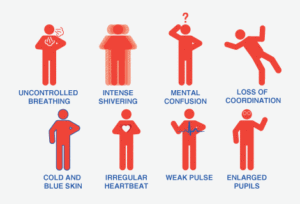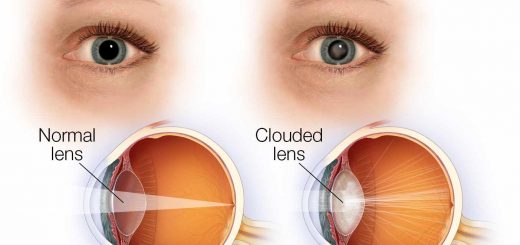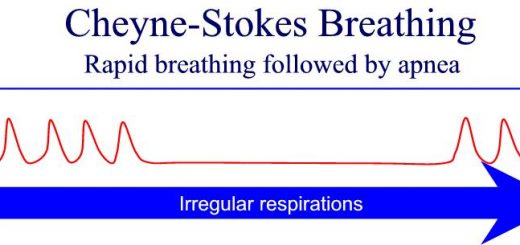What are the different stages of Hypothermia?
Hypothermia is a state of low body temperature. It is important for first aiders to be able to recognise the signs and symptoms of hypothermia. These depend on how cold the patient is. In this blog post we look at the different stages of hypothermia.
 One of the first signs that a person is having difficulty regulating their body temperature are the ‘-umbles’ – stumbles, mumbles, fumbles, and grumbles which show changes in motor coordination and levels of consciousness. Signs and symptoms then develop in accordance with the body’s core temperature.
One of the first signs that a person is having difficulty regulating their body temperature are the ‘-umbles’ – stumbles, mumbles, fumbles, and grumbles which show changes in motor coordination and levels of consciousness. Signs and symptoms then develop in accordance with the body’s core temperature.
Mild Hypothermia (36-35°C)
- shivering – not under voluntary control
- can’t do complex motor functions but can still walk and talk
- vasoconstriction to periphery (fingers, toes etc)
Moderate hypothermia (35-33)
- reduced level of consciousness
- loss of fine motor coordination, particularly in hands due to restricted peripheral blood flow
- slurred speech
- violent shivering
- irrational behaviour, such as paradoxical undressing, where the casualty starts to remove clothing unaware that they are cold
Severe hypothermia (< 33-30°C)
- shivering occurs in waves, violent then pause, pauses get longer until shivering finally ceases because the heat output from burning glycogen in the muscles is not sufficient to counteract the continually dropping core temperature, the body shuts down on shivering to conserve glucose
- casualty falls to the ground, curls up into a fetal position to conserve heat
- muscle rigidity develops because peripheral blood flow is reduced and due to lactic acid and carbon dioxide buildup in the muscles
- the skin becomes pale
- pupils dilate
- pulse rate decreases
- at 32°C the body tries to move into hibernation, shutting down all peripheral blood flow and reducing breathing rate and heart rate. While vasoconstriction aids in retaining heat it does little to control heat loss from the head
- at 30°C the body is in a state of ‘metabolic icebox.’ The casualty looks dead but is still alive. If treatment is not initialised, the breathing will become erratic and very shallow, the level of consciousness will continue to fall and cardiac arrhythmias may develop





